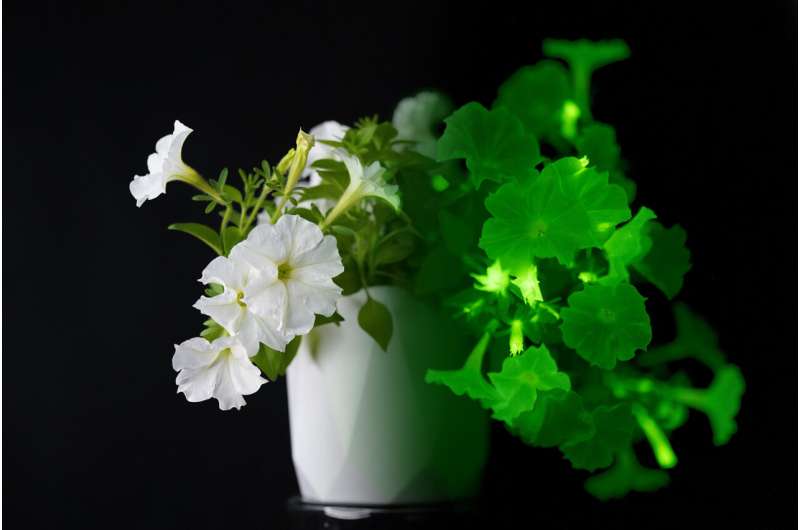In a groundbreaking study published in Science Advances, a team of synthetic biologists led by Karen Sarkisyan at the MRC Laboratory of Medical Sciences has achieved a remarkable feat: creating plants that emit light using the mechanisms of fungal bioluminescence. This discovery marks a significant step forward in our understanding of bioluminescence in plants and opens new avenues for research and applications in both plant biology and beyond.
The key to this breakthrough lies in the identification of plant enzymes, specifically hispidin synthases, capable of catalyzing the intricate reactions involved in bioluminescence. By harnessing these enzymes, the researchers have developed a hybrid pathway that combines plant and fungal components, allowing plants to produce their own light autonomously.
This technology not only offers a mesmerizing display of living light in plants but also provides a powerful tool for visualizing molecular physiology at the organismal level without the need for invasive techniques. Through continuous monitoring of bioluminescent plants, researchers can gain insights into various aspects of plant biology, including responses to environmental stresses and disease resistance.
Moreover, the versatility and adaptability of the newly discovered plant gene make it suitable for a wide range of applications, from horticulture to biomedical research. Companies like Light Bio, co-founded by Sarkisyan, are already exploring the commercial potential of bioluminescent plants, with products like the Firefly Petunia showcasing the beauty and innovation of this technology.
Beyond aesthetics, the implications of this research are profound. By leveraging the natural phenomenon of bioluminescence, scientists can revolutionize fields such as crop development and drug screening, paving the way for sustainable agriculture and medical advancements.
The discovery of plant-based bioluminescence represents a remarkable fusion of nature and technology, offering both visual spectacle and scientific insight into the mysteries of life. As we continue to unlock the secrets of bioluminescence, the possibilities for innovation and discovery are boundless.
